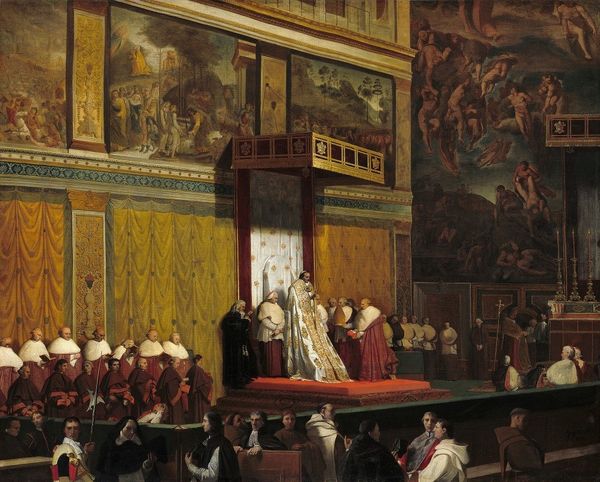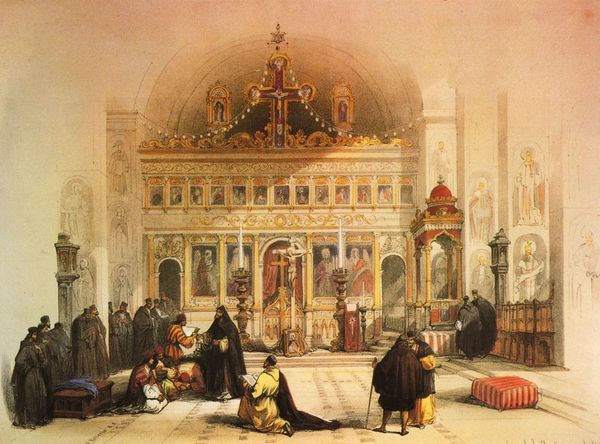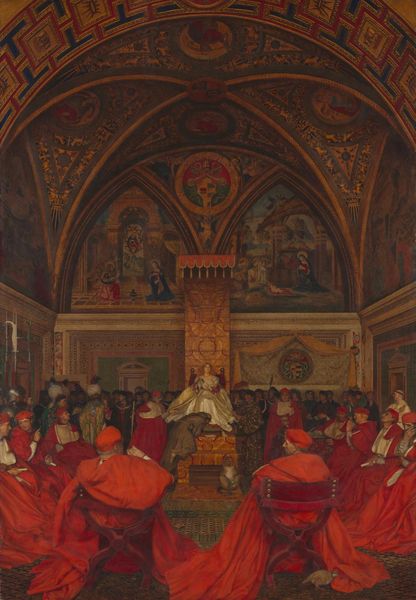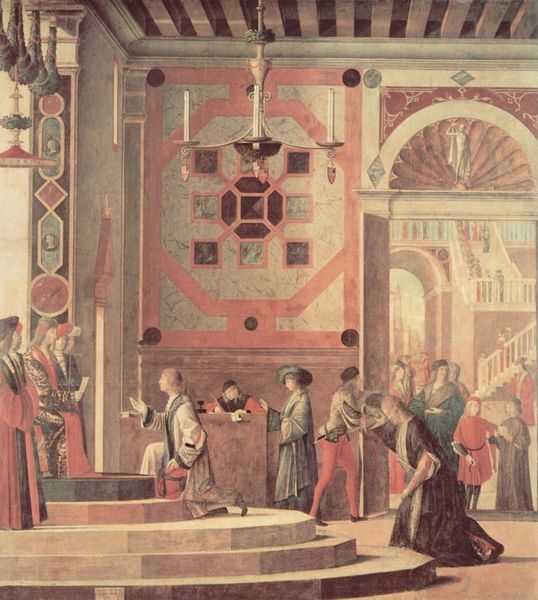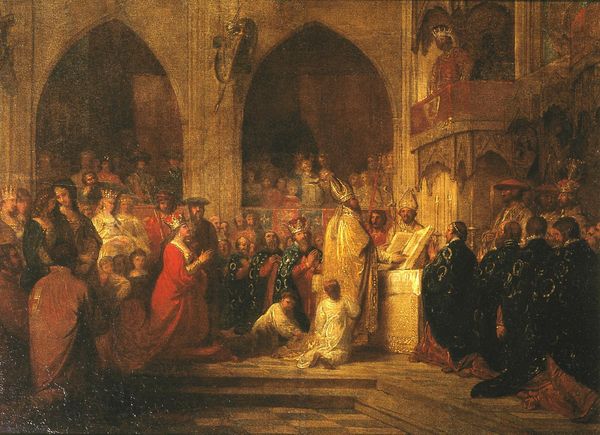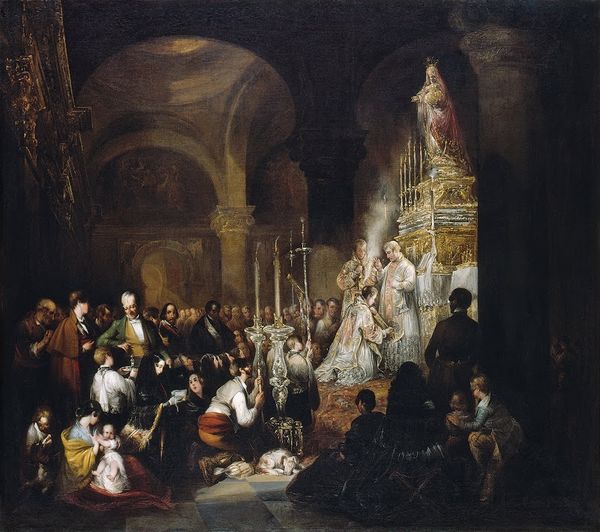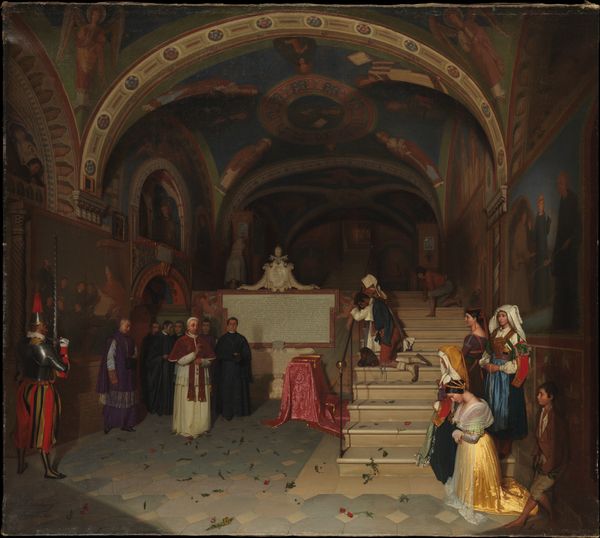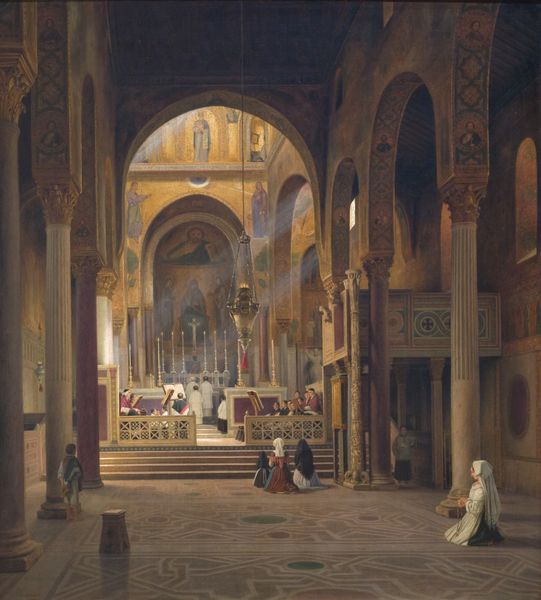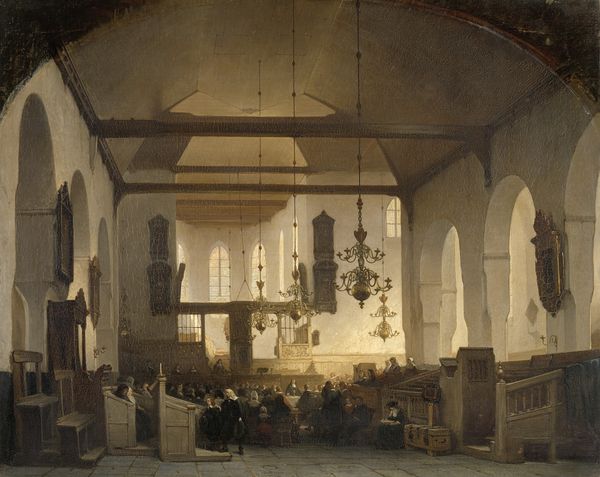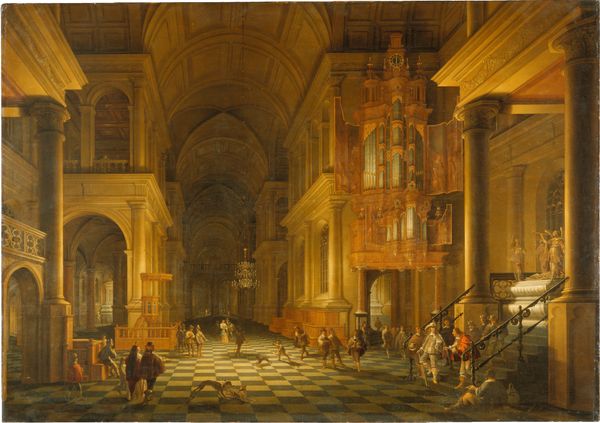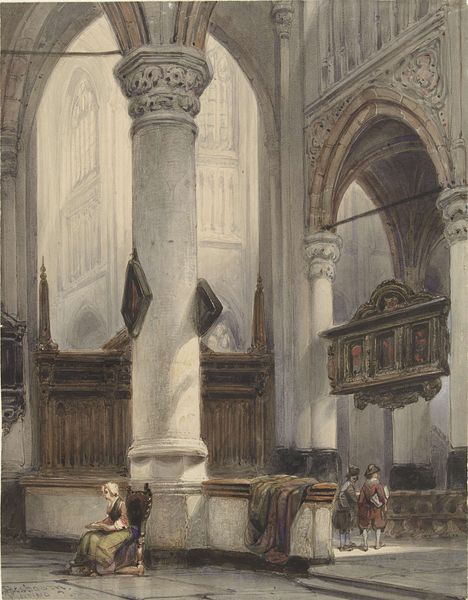
painting, watercolor, architecture
#
painting
#
holy-places
#
oil painting
#
watercolor
#
romanticism
#
history-painting
#
watercolor
#
architecture
Copyright: Public domain
Editor: David Roberts' "Nazareth. The Church of the Annunciation", is a watercolor and oil painting. It captures the church's interior with incredible detail, the monks moving around look peaceful. What do you see in this piece? Curator: I see more than just peace; I see a careful construction of power and piety through visual representation. Consider how Roberts chooses to depict this sacred space. It's not simply a rendering of architecture, is it? Editor: No, definitely not simple. The light seems intentionally placed, highlighting certain figures, and the architectural details are almost exaggerated. Curator: Precisely. Think about the history of the Church of the Annunciation itself. Its various reconstructions and its contested role in the socio-political landscape of the time. Roberts, by painting it, engages with the politics of holy places and their visual consumption. It speaks to how Western audiences are encouraged to imagine and interact with sites of religious significance, right? What effect does romanticism have on its visual imagery? Editor: It’s almost staged, isn’t it? The romantic style emphasizes the grandeur and perhaps simplifies the complex realities of the region. Is he creating a specific narrative? Curator: Indeed. Roberts’ painting participates in a broader artistic project, constructing an idea of the Holy Land for a European audience hungry for the exotic and the spiritual. The play of light, the imposing architecture, even the depiction of the monks – they all contribute to this narrative. Editor: That makes me think differently about the painting now, seeing how it presents both religious sentiment and a certain viewpoint on that region's history. Curator: Yes. Considering art's role in shaping historical perceptions, even seemingly reverent works are participating in a much wider visual and social discourse. I’ve certainly never looked at it that way!
Comments
No comments
Be the first to comment and join the conversation on the ultimate creative platform.
